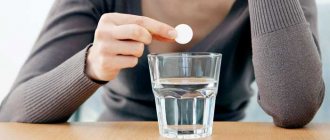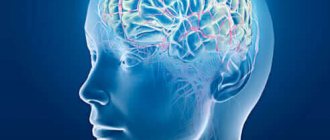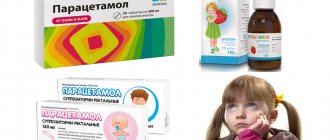Nonsteroidal anti-inflammatory drugs are very often used nowadays, as they have a wide range of indications and can alleviate the condition of patients with various pathologies of inflammatory etiology. Nise is considered one of the most widely used drugs from this group, since it is available in various dosage forms, which allows it to be used externally, orally and by injection.
Most often, anti-inflammatory drugs are prescribed for diseases of the musculoskeletal system, and these can be both traumatic lesions and rheumatic and even autoimmune pathological processes. Next, we will talk in more detail about the composition of the pharmacological substance Nise, its areas of use, the features of each of the dosage forms, and also provide several reviews from patients who used the medication to treat and improve their well-being.
Composition and active substance
Nise belongs to the group of non-steroidal anti-inflammatory drugs that realize their therapeutic effects by inhibiting the production of cyclooxygenase type 2.
The pharmacological composition of this drug is as follows:
- The main active substance that binds to target cells and promotes the development of therapeutic effects in the human body is nimesulide. This chemical compound is found in all dosage forms.
- In the tablet dosage form, the following substances act as auxiliary components: calcium hydrogen phosphate, microcrystalline cellulose, vegetable starch, sodium carboxymethylcellulose, magnesium salt and stearic acid.
- In Nise gel, the excipients are as follows: N methyl 2 pyrrolidone (organic solvent), propylene glycol, ethylene glycol polymer, dimethylcarbinol, distilled water, carbopol, E320, potassium salt of orthophosphoric acid.
Nise is available in various dosage forms, which makes it convenient for use and expands the scope of use.
Compound
5 ml of the drug contains 50 mg of the active ingredient (nimesulide). Minor elements:
- sorbitol;
- propylparaben;
- methylparaben;
- quinoline yellow dye WS;
- lemon acid;
- xanthan gum;
- water;
- 80 polysorbate;
- glycerol;
- pineapple flavoring;
- sucrose.
The syrup is placed in glass bottles. The box contains 1 bottle, instructions for use and dosage cap.
Indications for use: what helps
This drug has a fairly wide range of prescriptions for various nosological units, since its action can be effective when carrying out therapeutic pathogenetic treatment by turning off the inflammatory component of the underlying disease.
So, Nise can be prescribed in the following cases and for the following pathological conditions and diseases:
- Rheumatoid arthritis, with a pronounced inflammatory and exudative component of inflammation.
- An attack of gouty arthritis with a pronounced pain component and swelling of the joint and surrounding tissue.
- Psoriatic arthritis involving joints of any location (usually small proximal and distal joints of the hand).
- Ankylosing spondylitis or ankylosing spondylitis. This non-steroidal anti-inflammatory drug does not affect the progression of the pathology and the outcome of the disease, but provides symptomatic assistance in relieving pain.
- Osteochondrosis of any part of the spine with a predominance of radicular syndrome in the clinic.
- Osteoarthritic joint damage.
- Muscle pain, which can be caused by both rheumatological and non-rheumatological etiological factors.
- Inflammation of the ligaments of joints, tendon sheaths and fascia of any origin (most often post-traumatic pathologies).
- Nise can be used to reduce pain and discomfort in the postoperative period.
- Painful menstruation with a disturbance in the patient’s general condition (dizziness, sweating, hot flashes, nausea, cephalgia).
- As a symptomatic treatment, it can be used to relieve a headache attack.
- Pain caused by dental diseases.
- Arthralgia (presence of isolated pain without other signs of inflammation).
Contraindications:
- history of hyperergic reactions, for example, bronchospasm, rhinitis, urticaria, associated with taking acetylsalicylic acid or other NSAIDs, incl. nimesulide;
- history of hepatotoxic reactions to nimesulide;
- concomitant (simultaneous) use of drugs with potential hepatotoxicity, for example, paracetamol or other analgesic or non-steroidal anti-inflammatory drugs;
- inflammatory bowel diseases (Crohn's disease, ulcerative colitis) in the acute phase;
- period after coronary artery bypass surgery;
- fever in infectious and inflammatory diseases;
- complete or partial combination of bronchial asthma, recurrent nasal polyposis or paranasal sinuses with intolerance to acetylsalicylic acid and other NSAIDs (including a history);
- peptic ulcer of the stomach and duodenum in the acute phase, a history of ulcers, perforation or bleeding in the gastrointestinal tract;
- a history of cerebrovascular hemorrhage or other bleeding, as well as diseases accompanied by bleeding;
- severe blood clotting disorders;
- severe heart failure;
- severe renal failure (creatinine clearance <30 ml/min), confirmed hyperkalemia;
- liver failure or any active liver disease;
- children under 12 years of age;
- pregnancy and breastfeeding;
- alcoholism, drug addiction;
- hypersensitivity to the components of the drug.
How long does it take to work?
The beginning of the development of a pronounced pharmacological effect of Nise tablets depends on a number of factors. When taken orally along with food, its absorption will slow down, but this does not affect the degree of absorption of the drug. If you do not drink enough water, the effect of the tablets may also slow down.
Important! Reduction of pain syndrome with proper use of the medicine can develop within 20-25 minutes, the peak effect occurs after approximately 50-60 minutes.
The duration of action of Nise depends on the severity of the pathology and the characteristics of the body’s metabolism and can vary from 2.5 hours to 12 hours. Therefore, the frequency of oral administration of this drug should be limited to 2 times daily.
The effect of Nise application forms (gel, ointment) can also vary depending on the individual characteristics of the patient’s body. The maximum duration of action of this pharmacological drug when applied externally is 4-6 hours, so it is recommended to apply it no more than 4 times a day.
Pharmacological properties of Nise syrup
Pharmacodynamics
The syrup belongs to a number of innovative NSAIDs. It selectively inhibits the COX-2 enzyme, which is involved in the production of prostaglandins. The medication has antipyretic, analgesic and anti-inflammatory activity.
In addition, the suspension has an antioxidant effect and slows down the formation of toxins during the breakdown of oxygen due to a decrease in the function of meyl peroxidase. Interacts with GK receptors, increasing their activity through phosphorylation. As a result, the anti-inflammatory effect of the drug increases.
Pharmacokinetics
Nimesulide is effectively absorbed from the intestine. Food somewhat reduces the speed of this process, but does not affect its intensity. The maximum plasma concentration of the active substance (nimesulide) accumulates in 1.5-2 hours and reaches 4-7 mg/l.
The component can penetrate the BBB. In the liver, nimesulide is metabolized with the participation of tissue monooxygenases.
T1/2 averages from 1.5 to 5 hours. The element is excreted with bile and kidneys. In elderly patients, children and in cases of impaired renal function, the pharmacokinetics of the active substance changes insignificantly.
Instructions for use
The method of use of the described drug depends on what dosage form you will use and for what indications. The maximum, minimum single and daily dosages of drugs also depend on the method of administration and the nosological unit treated with Nise.
In elderly patients and children, the pharmacokinetics of the drug do not differ significantly from the indications calculated for adults.
Pills
Nise tablets are intended for oral use. The tablet form should be taken orally with a sufficient amount of clean still water. It is not recommended to take the drug during meals, as this affects the rate of absorption of the drug. In patients who have concomitant diseases of the gastrointestinal tract, the drug should be taken strictly after meals to prevent unwanted complications.
In order to reduce the risk of side effects, you need to use the drug in minimal effective doses and try to make the course of treatment as short as possible.
The maximum daily dosage of the described pharmaceutical drug is 200 milligrams. Thus, the dosage regimen should look like this: 1 tablet 2 times a day.
In patients who have a chronic decrease in kidney function, the maximum daily dose should be reduced to 100 milligrams.
Ointment/gel/cream
Application forms of this drug should be applied to a previously cleaned and dried skin surface. On the area of greatest pain, you need to evenly squeeze out a strip of gel 2-3 centimeters long and distribute it evenly over the surface of the skin.
Note! There is no need to rub the gel in or make any effort to distribute it.
The frequency of use and the volume of the drug used should be determined by your attending physician, taking into account the examination data and the diagnosis. The maximum permissible frequency of applying Nise is 3-4 times a day.
The duration of the course of treatment should also be determined taking into account the individual characteristics of the patient’s body. This gel can be used for more than 10 days in a row only after consulting a qualified doctor of the appropriate specialty.
Powder
The powder is used internally after first dissolving it in clean, warm, still water. The contents of one sachet of the drug must be mixed with 100 milliliters of liquid. The maximum allowed use is 2 sachets per day. In patients with renal diseases affecting the excretory function of the kidneys, the dose should be reduced by 2 times compared to the maximum allowable.
Injections
Nise is available in ampoules containing 2.5 milliliters of the drug. Pharmacological agents are supplied to pharmacies packaged in cardboard packages of 3, 5 or 10 ampoules. The frequency of injections and the amount of the drug administered at a time should be determined by the doctor after a thorough examination of the patient and establishment of a final diagnosis.
For children
For children who have reached the age of 12 years, the drug is prescribed in the same dosages and according to the same regimens as adults.
Prescribing Nise to patients under 7 years of age is strictly contraindicated, and this point is indicated in the official instructions for use of this pharmacological drug.
For children from 7 to 12 years of age, the described drug should be prescribed for treatment only in cases where the doctor considers it justified and safe enough for the child. In this case, it is necessary to individually select dosages. Constant monitoring of the effectiveness of treatment by the doctor who prescribed the therapy is required.
Nise®
Glucocorticosteroids
: Increase the risk of gastrointestinal ulcers or bleeding.
Antiplatelet agents and selective serotonin reuptake inhibitors
: Increase the risk of gastrointestinal bleeding.
Anticoagulants
: NSAIDs may enhance the effect of anticoagulants such as warfarin. Due to the increased risk of bleeding, this combination is not recommended and is contraindicated in patients with severe coagulation disorders. If combination therapy cannot be avoided, careful monitoring of blood clotting parameters is necessary.
Diuretics:
NSAIDs may reduce the effect of diuretics. In healthy volunteers, nimesulide temporarily reduces the excretion of sodium under the influence of furosemide, to a lesser extent the excretion of potassium, and reduces the diuretic effect itself. Co-administration of nimesulide and furosemide leads to a decrease (by approximately 20%) in the area under the concentration-time curve (AUC) and a decrease in the cumulative excretion of furosemide without changing the renal clearance of furosemide. Co-administration of furosemide and nimesulide requires caution in patients with impaired renal or cardiac function.
ACE inhibitors and angiotensin II receptor antagonists:
NSAIDs may reduce the effect of antihypertensive drugs. In patients with mild to moderate renal failure (creatinine clearance 30-80 ml/min), when co-administered with ACE inhibitors, angiotensin II receptor antagonists or substances that suppress the cyclooxygenase system (NSAIDs, antiplatelet agents), further deterioration of renal function and the occurrence of acute renal failure, which is usually reversible. These interactions should be considered in patients taking Nise® in combination with ACE inhibitors or angiotensin II receptor antagonists. Therefore, coadministration of these drugs should be used with caution, especially in elderly patients. Patients should be kept adequately hydrated and renal function should be closely monitored after initiating concomitant therapy.
There is evidence that NSAIDs reduce lithium
, which leads to an increase in the concentration of lithium in the blood plasma and its toxicity. When prescribing nimesulide to patients receiving lithium therapy, plasma lithium concentrations should be regularly monitored.
Clinically significant interactions with glibenclamide, theophylline, digoxin, cimetidine and antacids (for example, a combination of aluminum and magnesium hydroxides)
was not observed.
Nimesulide inhibits the activity of the CYP2C9 isoenzyme. When taking drugs metabolized with the participation of this isoenzyme with nimesulide, the concentration of these drugs in plasma may increase.
When used simultaneously with
antiepileptic drugs (valproic acid), antifungal drugs (ketoconazole), antituberculosis drugs (isoniazid), amiodarone, methotrexate, methyldopa, amoxicillin in combination with clavulanic acid, an
additive hepatotoxic effect is possible.
Due to the high degree of binding of nimesulide to plasma proteins, patients concomitantly taking sulfonamides
should be under the supervision of a doctor, undergoing examinations at short intervals.
When nimesulide is prescribed less than 24 hours before or after taking methotrexate
Caution is required, since in such cases the plasma concentration of methotrexate and, accordingly, the toxic effects of this drug may increase.
Due to their effect on renal prostaglandins, inhibitors of prostaglandin synthetase, such as nimesulide, may increase the nephrotoxicity of cyclosporines
.
In vitro studies
showed that nimesulide is displaced from the binding sites by tolbutamide and salicylic acid. Although these interactions were determined in blood plasma, these effects were not observed during clinical use of the drug.
Overdose and side effects
An overdose of this drug can be manifested by the following symptoms: impaired consciousness, daytime drowsiness, painful nausea and vomiting. In some cases, bleeding into the lumen of the digestive tract and acute renal failure develop.
Treatment must begin immediately after an overdose is established, and it consists mainly of prescribing symptomatic therapy.
Children and pregnant women should not take the drug
Side effects when using Nise may be as follows:
- Allergic reactions, which can have very different degrees of severity. A mild allergy can manifest itself as a rash and itchy skin, and a severe one can lead to an attack of suffocation or anaphylactic shock, which requires immediate specialized medical care.
- From the nervous system, symptoms such as dizziness, cephalgia, sleep disturbances and panic attacks may occur.
- From the digestive tract, complications may be as follows: nausea, vomiting, bloating, bowel dysfunction (constipation or diarrhea), hiccups.
- When the liver is damaged, there is a marked increase in liver enzymes during a biochemical blood test. In severe cases, acute drug-induced hepatitis may develop.
- Damage to the hematopoietic organs can manifest as anemia (decreased number of red blood cells and hemoglobin), thrombocytopenia (decreased number of platelets).
- Complications from the respiratory system can be in the form of exacerbation of bronchial asthma with the development of asthma attacks.
- In very rare cases, patients may experience unnecessary hypothermia, that is, a persistent decrease in body temperature.
- Of the organs of touch, the function of the visual analyzer is most often disrupted. Patients may complain of occasional double vision and blurred vision. In the most severe cases, loss of visual fields or temporary loss of vision may occur.
Overdose
There have been no reported cases of significant complications when using the suspension in overdoses.
The following signs are possible: increased blood pressure, convulsive phenomena, malfunction of the kidneys, depression of respiratory function, exacerbation of liver failure, irritation of the intestinal walls.
Therapy: intestinal lavage, use of enterosorbents, symptomatic treatment. The medicine has no antidote. Hemodialysis and diuresis have a low level of effectiveness.
special instructions
Like any other drug, Nise has special instructions that you should read before you start taking it. It is necessary to know the features of the drug in order to prevent or at least reduce the risk of developing unwanted side complications in the patient.
All drugs belonging to the group of non-steroidal anti-inflammatory drugs have a pronounced ulcerogenic agent. It is due to the fact that their mechanism of action affects the resistance of the gastrointestinal mucosa (especially the stomach) to aggressive factors (hydrochloric acid, enzymes). Thus, with improper and uncontrolled use of Nise, drug-induced gastric ulcers may occur. Therefore, many doctors consider it advisable to prescribe NSAIDs under the guise of drugs that reduce the acidity of gastric juice (proton pump inhibitors, H2-histamine receptor blockers).
During pregnancy
This drug is not approved for use during pregnancy and breastfeeding. The effects and influences on the intrauterine development of the fetus of the described drug have not been sufficiently studied.
Alcohol compatibility
The simultaneous use of Nise tablets and alcohol is strictly prohibited, as this greatly increases the likelihood of toxic damage to hepatocytes and the development of acute liver functional failure. The risk of developing ulcers on the gastric mucosa also increases.
Application of Nise on temperature
Nise is one of the best medications that not only relieves symptoms of pain, but also helps reduce high fever. After taking the medication, an effective decrease in high temperature to normal values is observed. An important advantage of Nise in reducing extreme heat is that it is able to actively maintain the temperature for a sufficiently long period of time.
Pediatricians do not recommend using Nise for children in order to reduce the temperature at a level with such safe antipyretics as Viburcol, Paracetamol and Ibuprofen. This is due to the fact that high efficiency hides a whole list of side symptoms, which can occur not only with overdoses.
Nise is used only when antipyretics such as Ibuprofen and Paracetamol are ineffective. At the same time, do not forget that you should initially consult a specialist. If the doctor does not recommend giving your child Nise, then you should listen to him.
It is important to know! In most countries, particularly in Europe, preparations containing nimesulide are prohibited for use in children under 12 years of age. In the Russian Federation, this drug is approved for use, but only if there are appropriate indications.
Reviews
- Veronica, 27 years old. While playing sports, I injured my knee joint. At first I didn’t see a doctor, but after a week of suffering I went to a traumatologist. He prescribed Nise in tablets for 10 days. After only 4 days of taking it, all the symptoms began to disappear, but I finished the course to the end in order to be sure to overcome the inflammation.
- Igor, 56 years old. After forty years, my joints began to constantly bother me. From time to time, all large joints begin to ache, swell, and sometimes the aggravation is so severe that redness of the skin above the joint appears. I save myself only with Nise-gel, which quickly relieves inflammation.
- Vasilisa, 45 years old. Pain in the knee joint has accompanied me for the past 5 years. There was a minor injury, but even after a course of treatment, severe discomfort periodically occurs. I tried many medications, but settled on Nise in the form of a gel, because it begins to act the fastest, and this is very important when you cannot step on your foot due to pain.
Need for use
Nise contains nimesulide; the manufacturer's instructions indicate the following age restrictions for its use:
- Syrup is allowed for children under 3 years of age.
- Children from 3 to 12 years old are allowed to give Nise in the form of a suspension and soluble tablets.
- Children over 12 years of age are given the drug in any form.
Doctors do not recommend that parents give Nise to children under 3 years of age. From 3 years old, you can give medicine to a child as individually prescribed by a specialist.
Depending on the form of release of the drug, they resort to its use for the following ailments:
- Soluble and regular Nise tablets are used for arthritis, joint damage, gout, osteochondrosis, radiculitis, sciatica, inflammation of ligaments and tendons.
- The suspension is used for the following indications: at temperatures above 39 degrees, the presence of inflammatory processes, and also for the purpose of relieving pain in children.
- The ointment is used for the following indications: muscle pain, traumatic inflammation of the musculoskeletal system, rheumatism, gout.
It is important to know! The drug Nise is not a medicine, but is a symptomatic remedy that only relieves pain, but does not affect the cause of its occurrence. The drug is always prescribed together with other medications, which should be taken into account before giving it to a child.











